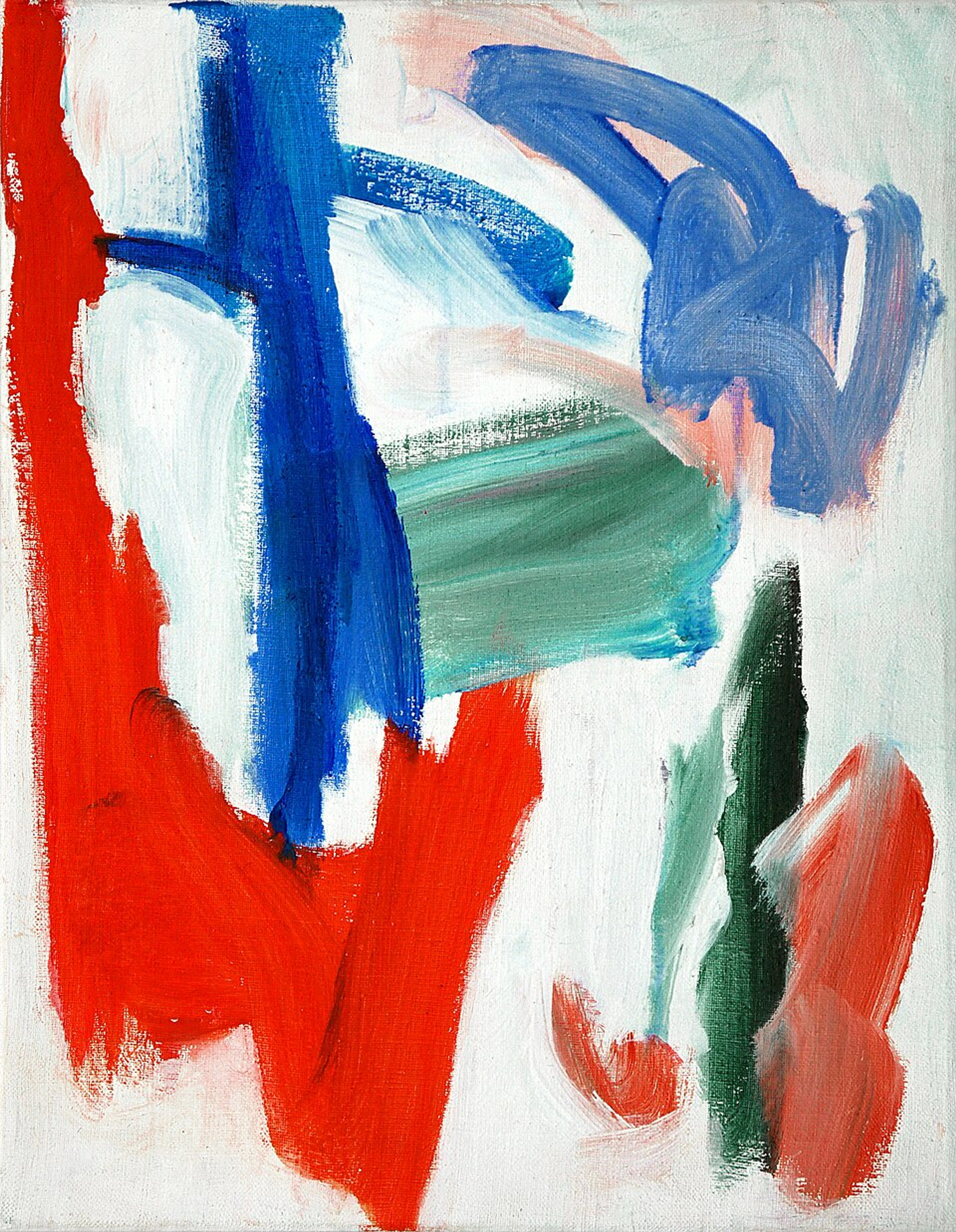
Art About Anxiety: Finding Resonance and Release
Explore how art serves as a powerful medium for understanding, expressing, and processing anxiety, from historical movements to contemporary practices.
Art About Anxiety: Finding Resonance and Release
Anxiety. It's that buzzing, humming, sometimes roaring presence that can feel impossible to articulate. You know it's there, a knot in your stomach, a tightness in your chest, a relentless loop in your mind. But try to explain it to someone, and the words often fall short, feeling flimsy against the weight of the actual feeling. I remember one specific morning, the world felt muted, gray, and distant, yet inside, everything was vibrating at an unbearable frequency. It was like trying to hold static in my hands. For me, as an artist, this is where art steps in. It offers a different language, a visual vocabulary for the inexpressible. It's a way to externalize the internal storm, to give it form and color when words fail. It's saying, "Okay, this is what's happening inside," and putting it out there.
I've spent countless hours in my studio, not always consciously trying to depict anxiety, but often finding that the process itself, the push and pull of color and form, mirrors the internal struggle. Sometimes the result is chaotic and raw; other times, it's a search for calm within the storm. Art about anxiety isn't just about showing the struggle; it's about finding a way through it, both for the creator and the viewer. It's a messy, beautiful fight on the canvas, and sometimes, just sometimes, you land a punch back.
So, how does this deeply personal, often isolating experience find its voice in the universal language of art? How have artists throughout history, and today, grappled with these intense, often wordless, internal states?
The Unspoken Language of Anxiety in Art History
How do you paint a feeling? Anxiety is deeply personal, yet universally understood on some level. It's a state of being that transcends simple description. This is why artists have long been drawn to exploring it, whether directly or indirectly. They use their mediums to translate the internal landscape into something external, something visible.
Think about the feeling of being overwhelmed, fragmented, or trapped. How do you paint that? You can't just draw a picture of someone looking worried. Anxiety is often an internal or felt state, a visceral experience that bypasses the rational mind. This is why art that resonates with anxiety often needs something more than literal representation; it needs to speak directly to the gut, to evoke the feeling itself.
Historically, artists have grappled with intense emotions and psychological states long before modern psychology gave them names like 'anxiety'. While the clinical term is relatively recent, the experience of unease, dread, and internal turmoil is ancient. Movements like Expressionism were explicitly born from a desire to express inner emotional experience rather than external reality. Think of Edvard Munch's iconic "The Scream" – he wasn't just painting a person; he was painting the feeling of a scream resonating through nature, the internal anguish made visible. It's a raw, visceral depiction that bypasses the need for words.
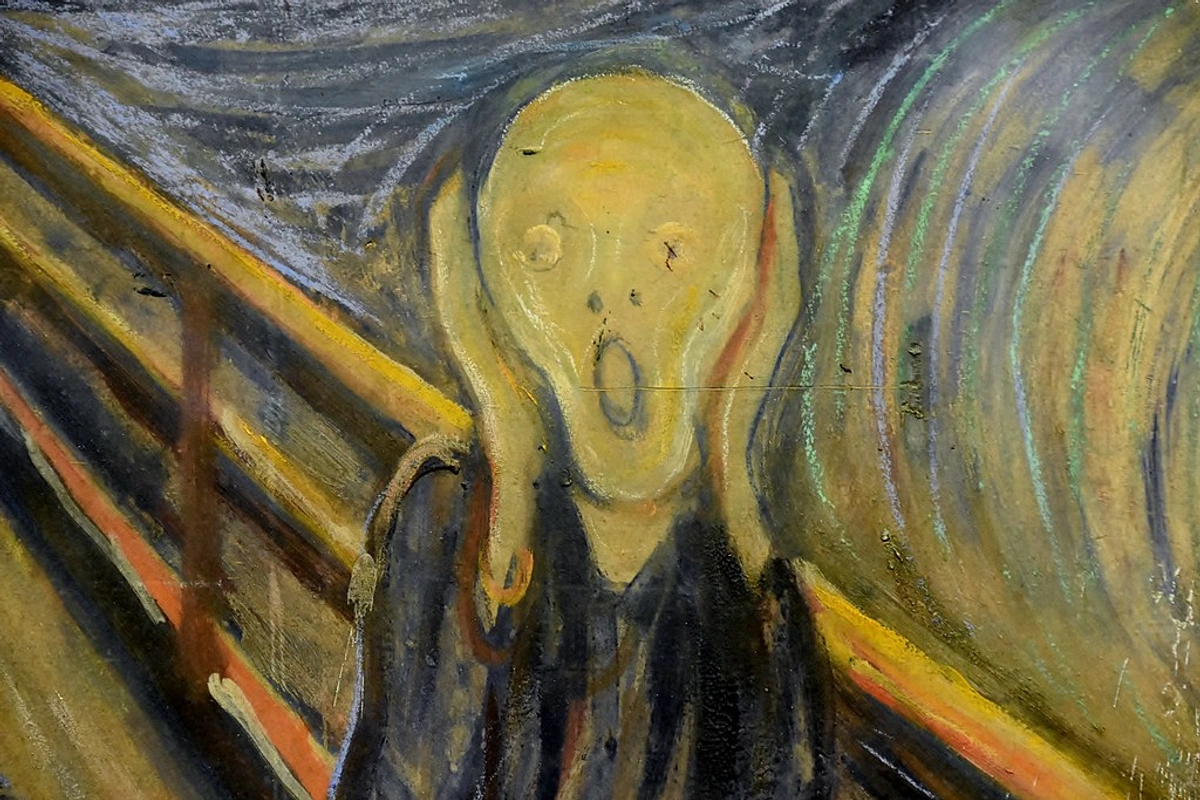
But even earlier, Romanticism explored intense feeling and the sublime, sometimes touching on themes of melancholy or existential unease, like the turbulent seas or isolated figures in works by artists such as J.M.W. Turner or Caspar David Friedrich. Symbolism sought to represent abstract ideas and emotions through symbolic forms, often delving into dreams, myths, and the subconscious in ways that can feel unsettling or mysterious, as seen in the works of Odilon Redon or Gustave Moreau. And Surrealism, while often playful, delved explicitly into the subconscious mind, frequently touching on fragmented, illogical, or unsettling states that resonate strongly with anxious feelings. Think of Salvador Dalí's melting landscapes or René Magritte's disorienting scenes – they capture a sense of reality being 'off', a feeling familiar to many experiencing anxiety.

Art has always been a vessel for the turbulent inner world. More recently, contemporary artists continue this exploration, often directly addressing themes of mental health, stress, and anxiety through diverse practices, bringing these often-hidden struggles into public view. Artists like Yayoi Kusama, known for her immersive installations dealing with psychological states, or Tracey Emin, whose raw, confessional work often explores vulnerability and emotional turmoil, are powerful examples. Even abstract artists like Mark Rothko, while not explicitly depicting anxiety, aimed to evoke profound emotional responses, which for some viewers can include feelings of introspection or even unease when confronted with vast fields of color.
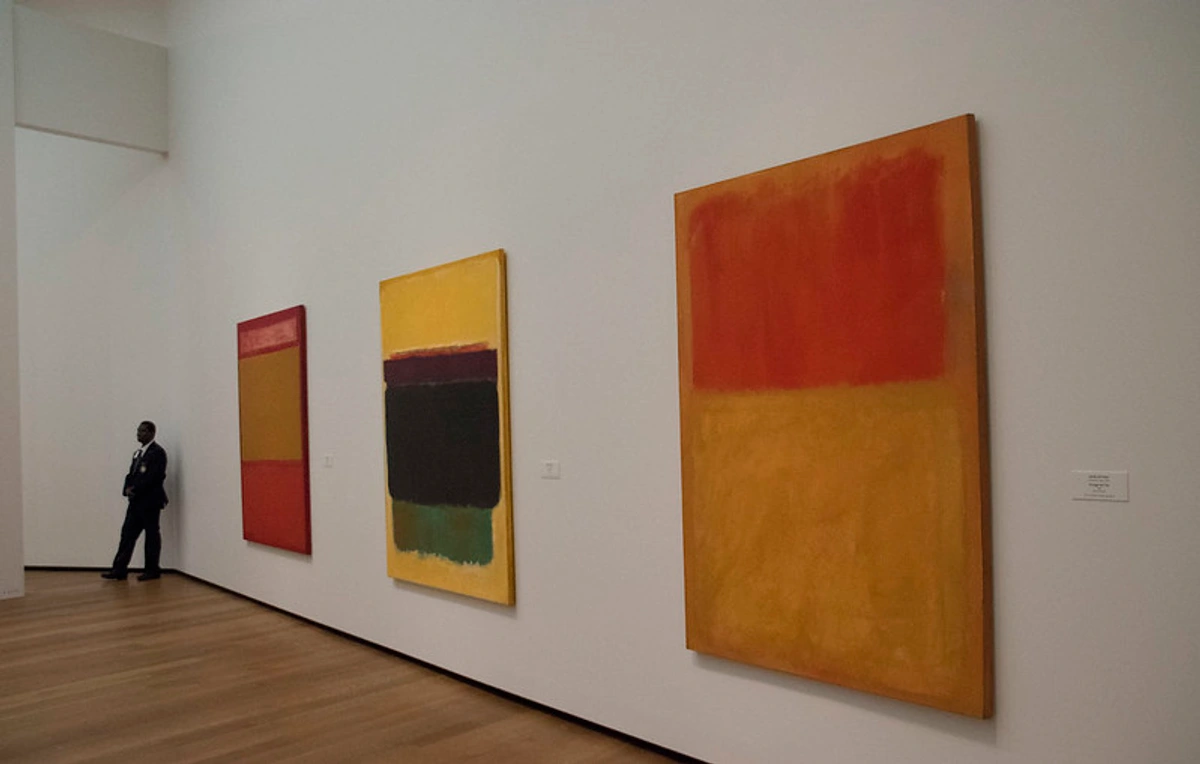
How Art Captures the Feeling: Elements and Techniques
So, what's in the artist's toolkit for translating that internal buzz or knot into something visible? How do they make the canvas feel anxious? Artists employ various tools to convey the sensation of anxiety. It's not just about the subject matter; it's about how it's rendered. These elements become the visual language of unease:
- Color: Color can be used dramatically to mirror internal states. Clashing colors, like a jangling nerve; intense, overwhelming reds or blues; or muddy, desaturated palettes that feel heavy and draining – all can evoke unease or tension. Conversely, soft, harmonious colors might represent a longed-for calm or a fragile peace, a visual deep breath. The psychology of color is a powerful tool here, whether used consciously or intuitively. For me, when my anxiety feels like a frantic, buzzing energy, I often find myself reaching for clashing, high-contrast colors that vibrate against each other on the canvas, like a visual representation of that internal static. Think of the jarring palettes in some Expressionist works or the unsettling hues in certain Surrealist paintings.
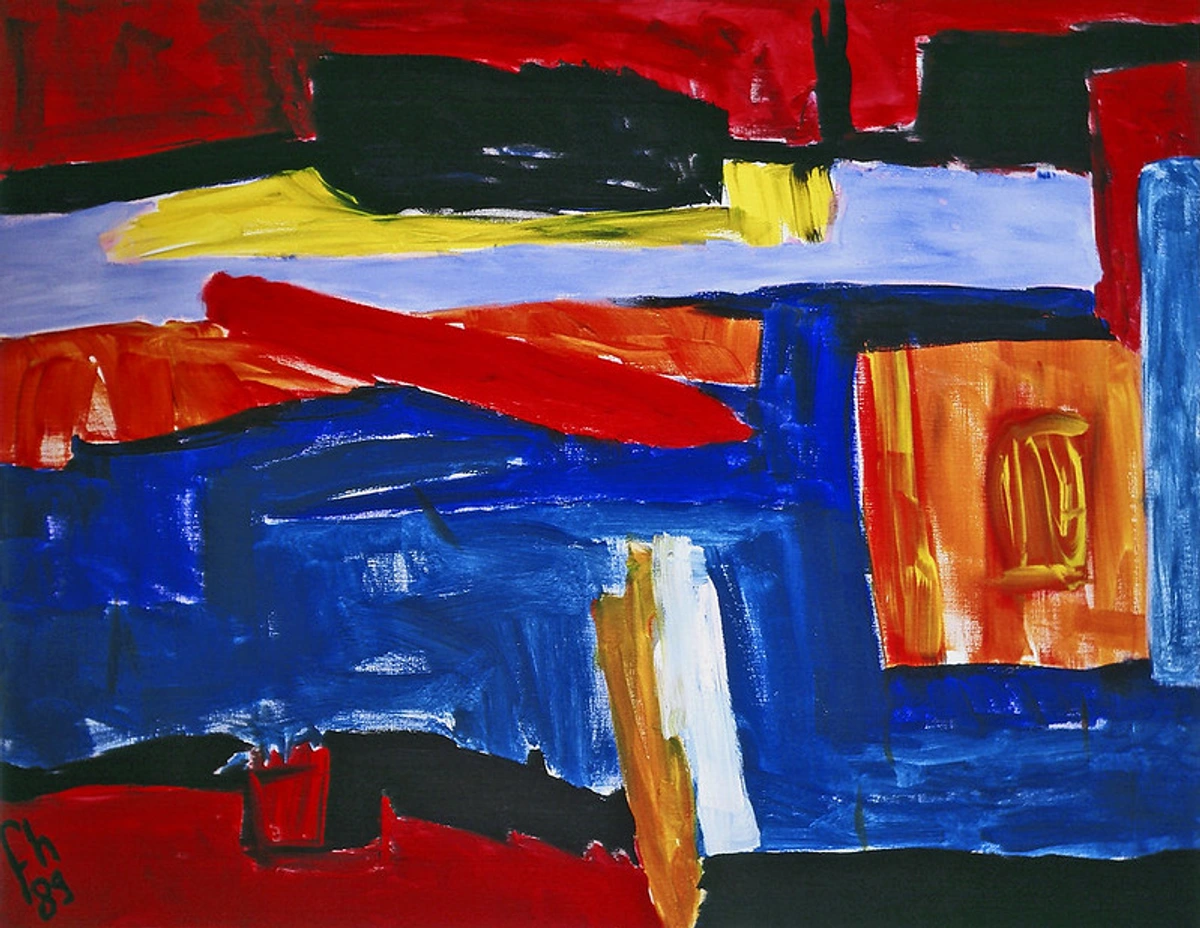
- Line and Form: Jagged, broken lines, like frantic scribbling or a mind that won't rest; distorted figures that reflect a feeling of being 'not quite right' or fragmented; or claustrophobic, overlapping forms that feel like everything is pressing in on you – these visually represent the tension and disarray of an anxious mind. Think of the unsettling shapes in Surrealism or the raw, uncontrolled energy of Abstract Expressionism. Sometimes, when I feel trapped or overwhelmed, my lines become thick and heavy, almost like bars, or they break apart entirely, mirroring the feeling of fragmentation. Edvard Munch's swirling lines in "The Scream" are a prime example of line conveying intense emotion.

Zen Dageraad, licence
- Composition and Space: An unbalanced or chaotic composition can create a sense of instability, mirroring the ground shifting beneath your feet. Crowded spaces, a lack of clear focal points that makes your eye jump around restlessly, or jarring perspectives can make the viewer feel uneasy, reflecting the feeling of being overwhelmed or disoriented. Beyond the canvas, physical space in installations or sculpture can evoke anxiety through confinement, disorientation, or overwhelming scale. Consider the unsettling perspectives in some Cubist works or the dense arrangements in certain Baroque paintings that can feel overwhelming. Or think of installations that force you into tight spaces or disorienting environments.
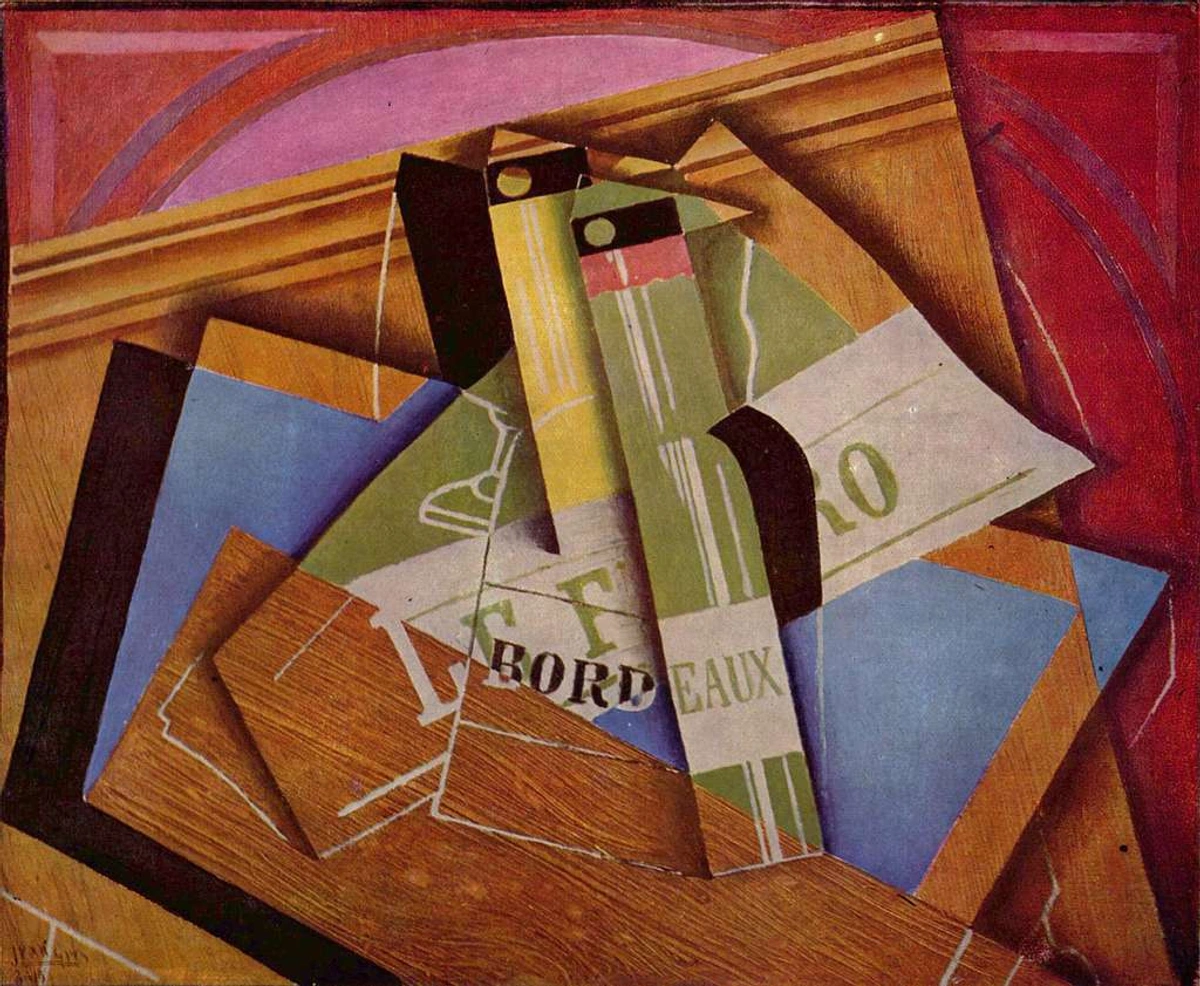
- Texture: Thick, impasto brushstrokes or rough textures can add a tactile sense of rawness, agitation, or even a physical manifestation of the 'buzzing' feeling. Smooth, controlled surfaces might represent a desperate attempt at calm or a feeling of being frozen. The heavily textured surfaces in some Abstract Expressionist paintings, like those by Jean Dubuffet, can convey a raw, almost anxious energy.

Zen Dageraad, licence
- Symbolism: Beyond the historical movement, contemporary artists often use recurring symbols to represent specific anxious thoughts, fears, or coping mechanisms. These might be personal symbols or more universally recognized motifs that evoke unease, vulnerability, or fragmentation. A recurring motif of tangled threads might represent feeling overwhelmed, while a single, isolated object could symbolize loneliness or detachment.
Abstract art is particularly potent for exploring anxiety because it doesn't rely on literal representation. It can tap directly into emotion through pure form, color, and gesture, bypassing the need for a recognizable subject. What makes abstract art compelling is often its ability to resonate directly with our internal, often wordless, states. For me, the freedom of abstraction allows me to directly translate the energy and feeling of anxiety onto the canvas without getting bogged down in trying to 'draw' it realistically. It's a direct line from the internal chaos to the external form.
Art as a Processing Tool: Creating Through the Storm
Moving from the visual language of anxiety to the act of creation through it... For many artists, the act of creation is a form of therapy. When words fail, the studio offers a space to work through difficult emotions. Anxiety can be a powerful, albeit uncomfortable, inspiration.
I've found that sometimes the most intense periods of anxiety lead to bursts of creative energy. It's like the pressure builds up, and the only release is to pour it onto the canvas or into a sculpture. I remember one particularly rough week where I felt completely frozen, unable to even start. The physical tension was immense, a tightness in my chest that made breathing feel shallow. Then, one evening, something just broke, and I spent hours just layering thick paint, scraping it back, making a glorious mess. The physical act of pushing the paint, the resistance of the canvas, the scraping sounds – it was a release valve. It wasn't planned, it wasn't pretty in the traditional sense, but it was something. It was about making marks, making noise, making something to counteract the feeling of being frozen and silent. And in that messy process, there was a strange sense of release, a feeling of having externalized the internal chaos, even if just for a little while. It's not about making the anxiety disappear entirely, but about externalizing it, giving it a form, and perhaps, in doing so, gaining a little distance or understanding. It's a way of saying, "Okay, this is what's happening inside," and putting it out there.
Different creative processes can mirror or help navigate anxious states. Repetitive actions like cross-hatching, weaving, or building up layers can be grounding, mimicking coping mechanisms or the cyclical nature of anxious thoughts. Destructive or reconstructive processes, like tearing paper for a collage or scraping back paint, can feel cathartic, a way to physically engage with the urge to break down or rebuild. Working with tactile materials like clay or thick paint can provide a sensory anchor when the mind is racing. Of course, it's not always a smooth process; sometimes the anxiety can feel overwhelming in the studio, leading to creative blocks or work that feels too raw or difficult to revisit later. It's a complex relationship.
For me, working with bold, abstract forms and vibrant colors, even when depicting internal turmoil, often feels like asserting control or finding a visual language that is strong enough to hold the intensity of the feeling. It's a messy, beautiful fight on the canvas. This therapeutic aspect of art creation is widely recognized, forming the basis of fields like art therapy, where the creative process itself is used to explore feelings, reduce conflict, and improve well-being.
Of course, creating art about something as personal as anxiety also comes with its own set of vulnerabilities. Sharing that work can feel like exposing a raw nerve, opening yourself up to potential misunderstanding or judgment. But sometimes, that vulnerability is exactly what creates the deepest connection with others. It's a risk, but one that can lead to profound resonance.

Art for the Viewer: Finding Resonance, Catharsis, or Calm
Just as creating art can be a way to process anxiety, viewing art can also have a profound impact. For some, looking at art that depicts anxiety can be deeply validating – a sense of "Ah, someone else gets it." It's finding resonance in a shared, often isolating, experience. Seeing the visual representation of that internal buzzing or tightness can make you feel less alone, fostering a sense of shared humanity and solidarity in the face of difficult feelings. It can also contribute to the destigmatization of mental health struggles, opening up conversations that are otherwise difficult to start.
Other times, viewing such art can be cathartic. It allows you to confront difficult emotions in a safe, external space. You can look at Munch's "The Scream" and feel a flicker of recognition, a release of tension, without being consumed by the feeling itself. It's like holding the emotion at arm's length for a moment.
And then there's the art that, while perhaps born from struggle, offers a sense of calm or resolution. Maybe it's the harmonious colors, the balanced composition, or the sheer beauty found within the depiction of chaos. This kind of art doesn't ignore the anxiety but suggests the possibility of navigating it, finding moments of peace, or even transforming the difficult experience into something visually compelling. It reminds us that even in the storm, there can be moments of quiet.
Viewing art about anxiety can also spark conversation, both internally and with others. It provides a starting point, a visual anchor, for discussing feelings that are otherwise hard to put into words. It opens doors and fosters connection through shared understanding.
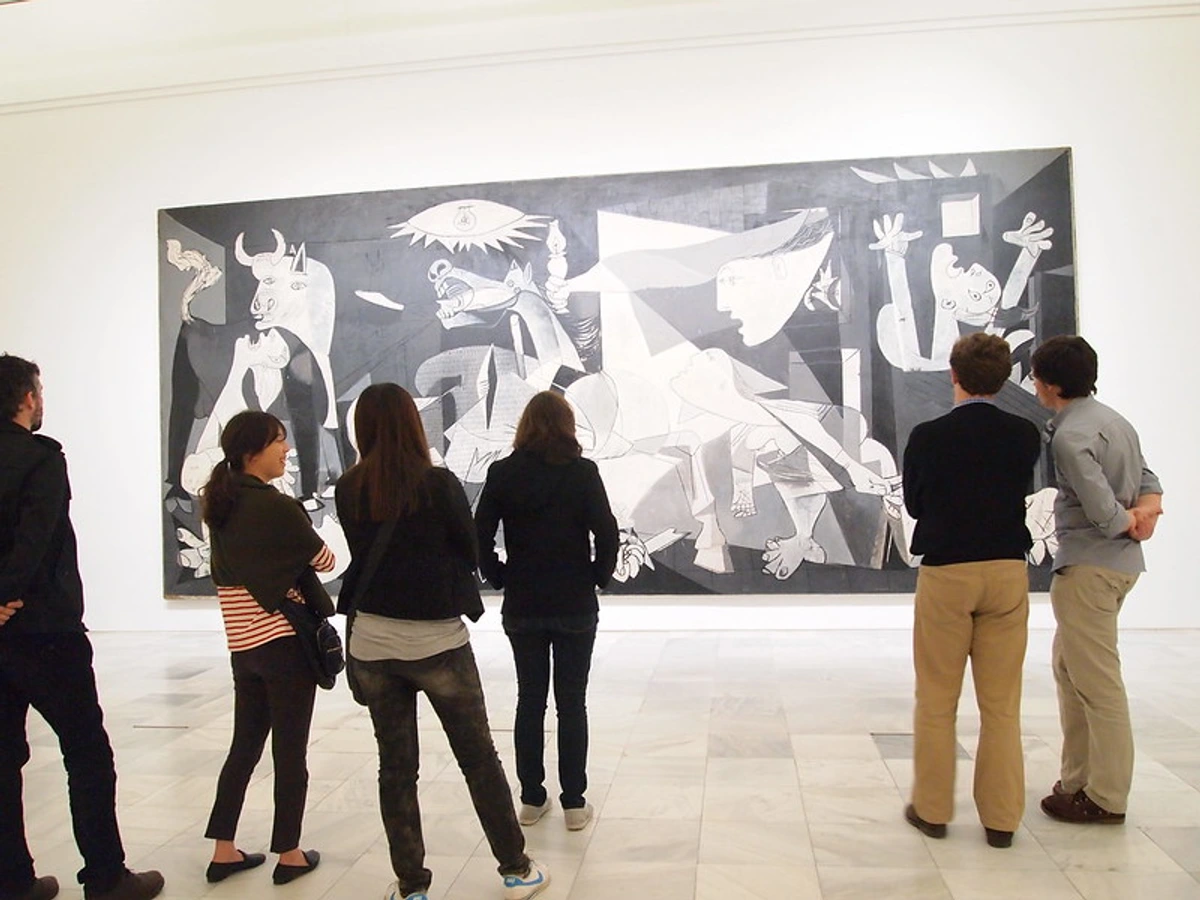
Anxiety in Different Forms: Beyond Traditional Painting
While painting offers a direct, often visceral way to express internal states, anxiety finds powerful expression across many different genres of art. For me, abstract painting feels like the most direct route to capturing the energy and feeling of anxiety, bypassing the need for representation entirely. But other mediums offer unique possibilities:
- Sculpture and Installation: These can create physical spaces that evoke feelings of confinement, disorientation, or vulnerability. Think of cramped installations or sculptures with fragmented forms. Artists like Louise Bourgeois often explored themes of fear and anxiety through her sculptures, creating unsettling yet compelling forms. They make the viewer feel the anxiety in a spatial way. Installation art, in particular, can use elements like sound (overwhelming noise or oppressive silence) or light (harsh, flickering, or absent) to simulate the internal noise, sensory overload, or quiet paralysis associated with anxiety.
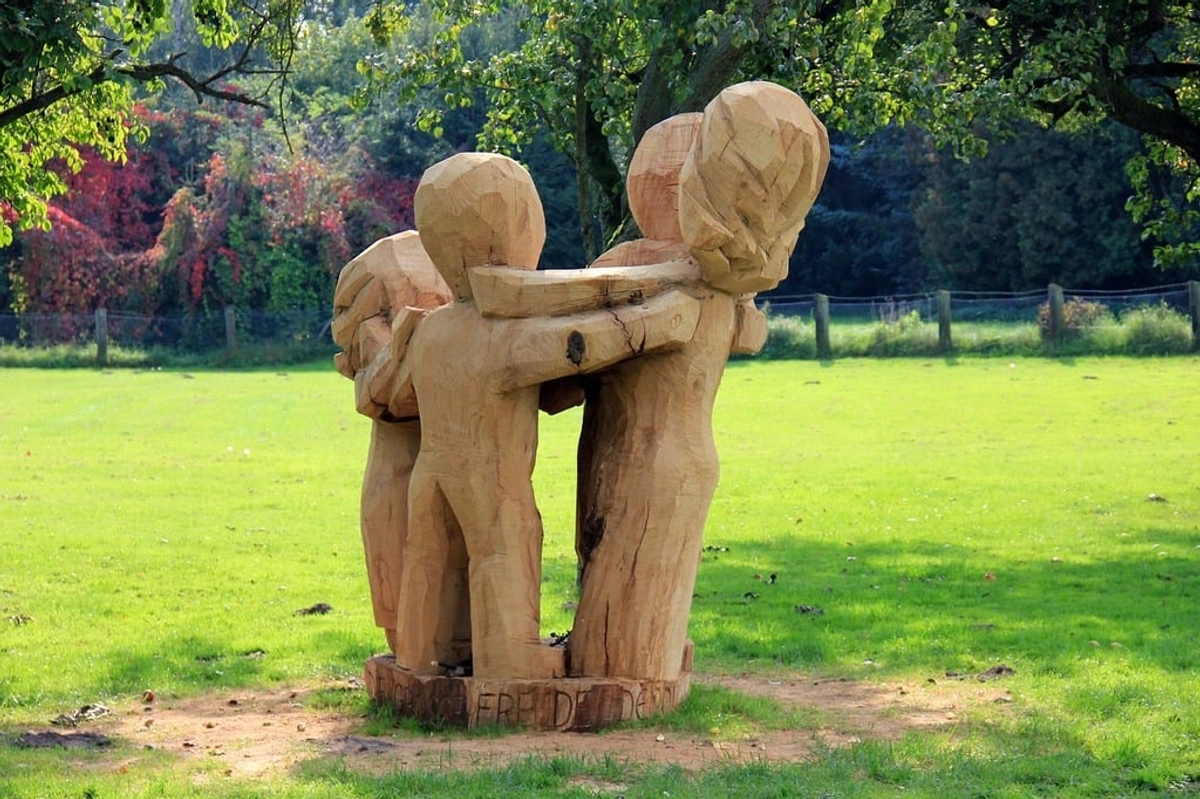
- Photography: Can capture fleeting moments of tension, isolation, or unease through composition, lighting, and subject matter. A single image can convey a world of internal struggle. Photographers like Diane Arbus, while controversial, often captured a sense of unease or alienation in her portraits. Contemporary photographers like Nan Goldin have also explored themes of vulnerability and difficult emotional states through intimate portraiture. Techniques like blurred motion, harsh or isolating lighting, or tightly cropped, claustrophobic compositions can visually translate anxious feelings.
- Performance Art: Often deals directly with vulnerability, repetition, and physical or emotional endurance, mirroring the relentless nature of anxiety. Marina Abramović's work, for example, frequently pushes the boundaries of physical and mental limits, resonating with feelings of stress and vulnerability. The vulnerability of the artist's body and mind in real-time can be a powerful, sometimes uncomfortable, reflection of internal struggle.
- Digital Art and Video: Can use glitch effects, distorted visuals, unsettling soundscapes, or interactive elements to create immersive experiences that simulate the feeling of a fragmented, overwhelmed, or disoriented mind. Artists working with digital mediums can build worlds that visually represent the internal chaos or the feeling of being trapped in a loop. For instance, video installations that use rapid cuts, distorted audio, or endlessly repeating visuals can evoke a sense of panic, unease, or the feeling of being stuck.
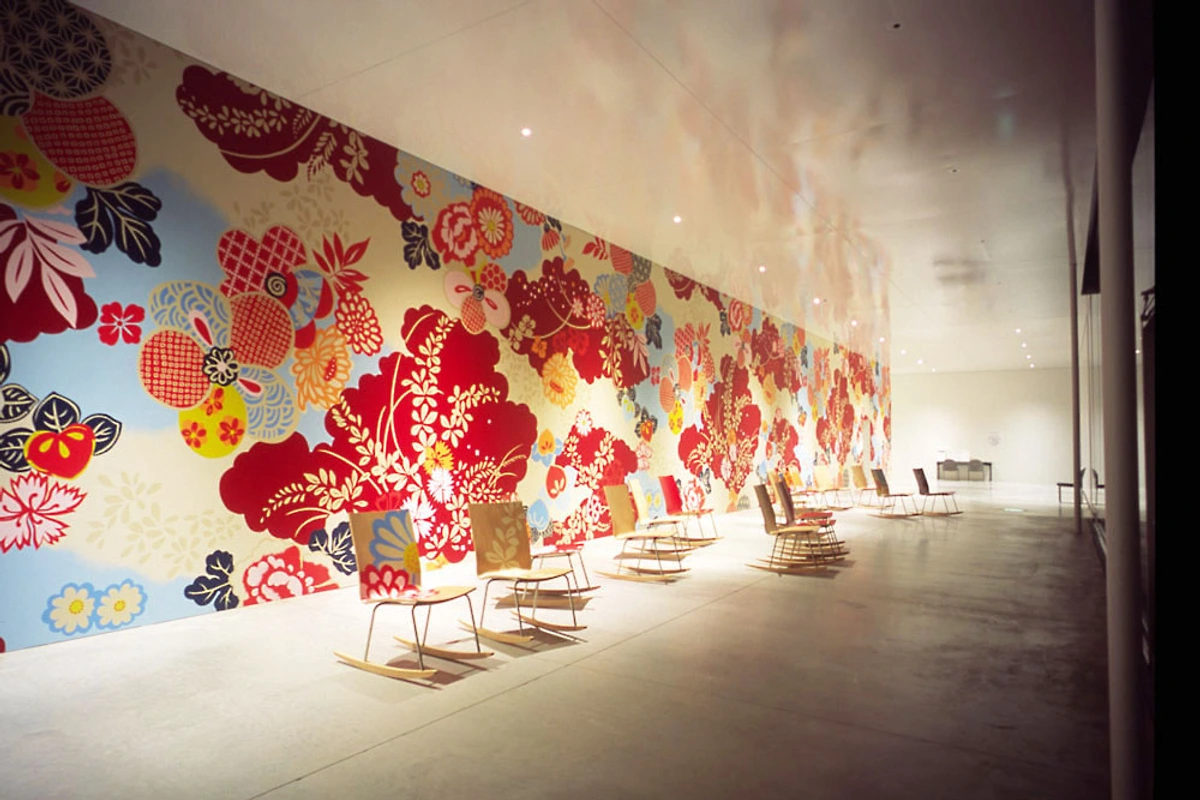
- Text-Based Art and Mixed Media: Sometimes, the internal monologue of anxiety is best captured through words. Artists use text directly in paintings, sculptures, or installations to convey specific anxious thoughts, fragmented phrases, or overwhelming internal dialogue. Mixed media works incorporating found objects, layers of different materials, or text can create a sense of visual clutter, fragmentation, or the weight of accumulated worries.
Each medium offers a unique lens through which to view and understand this complex emotion. Exploring different genres of art reveals the vast possibilities for expression.
Finding Your Own Connection
Whether you're an artist grappling with your own feelings or a viewer seeking understanding, art offers a powerful avenue for engaging with anxiety. It's a reminder that you're not alone in these experiences, and that even the most difficult emotions can be transformed, explored, and perhaps, eventually, navigated. Art provides a space for difficult feelings to exist outside of you, to be observed, understood, and sometimes, even beautiful.
Maybe you'll find a piece that speaks directly to your own buzzing mind, or perhaps you'll be inspired to pick up a brush or pen yourself. The journey through art and anxiety is deeply personal, but the resonance it offers is universal. It's about finding beauty, understanding, and a little bit of peace in the visual conversation about what it means to be human.
If my own journey as an artist, which you can explore on my timeline, resonates with yours, you might find something that speaks to you in my collection. My work, often abstract and colorful, is deeply intertwined with processing the world around and within me, and you can see many pieces in my museum in 's-Hertogenbosch.
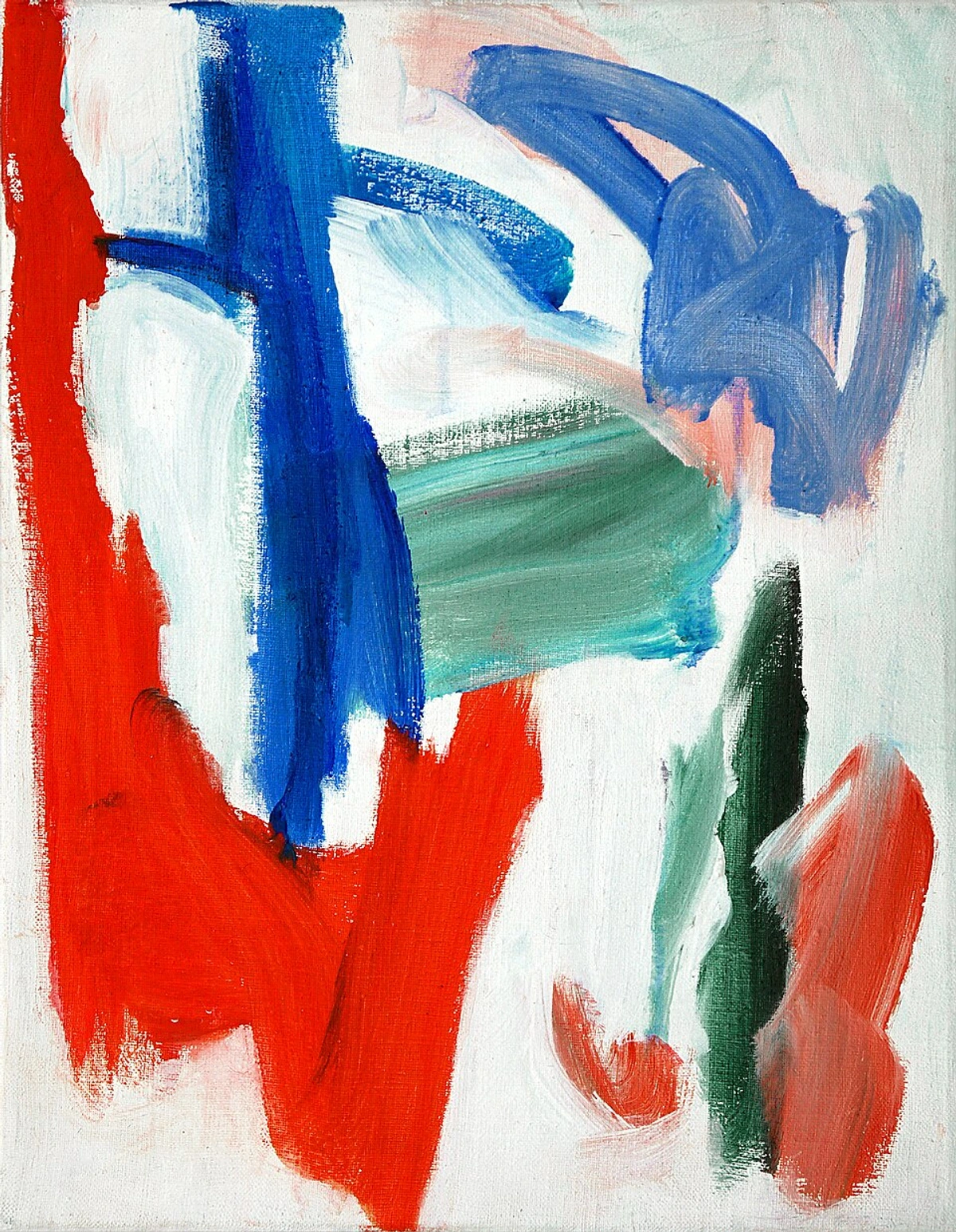
It's a conversation worth having, one brushstroke, one viewing, one breath at a time.




